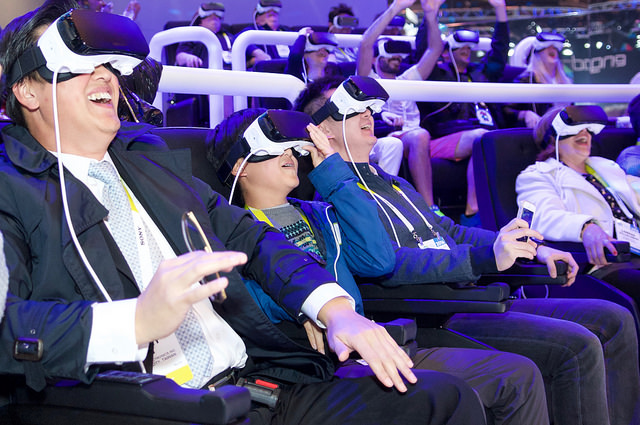For some users, virtual reality creates motion sickness, with the result that they either avoid VR completely or limit their time with VR experiences. Now, two engineering professors at Columbia University say that they’ve come up with a solution to VR sickness that can be easily applied to the current array of consumer VR headsets, including Oculus Rift, HTC Vive, Sony PlayStation VR and Google Cardboard. The solution is simply a matter of dynamically changing — sometimes quite subtly — the field of view (FOV).
Engineering and Technology reports that Columbia University professors Steven Feiner and Ajoy Fernandes have figured out that they can dramatically decrease motion sickness by dynamically and subtly altering the user’s FOV for “visually perceived motion” as they travel in a VR world while remaining stationary.
The decrease in FOV can be done “without decreasing the participants’ sense of presence in the virtual environment, and without the majority of them even being aware of the intervention.”
“VR sickness, which has symptoms similar to motion sickness, poses a barrier for many users of this immersive technology,” said Feiner. “People who experience VR sickness will often stop using their headsets, as they feel nauseated and uncomfortable.”
Fernandes, who has suffered from VR sickness, explains he was “aware of work on change blindness — a concept in perceptual psychology that explains why people sometimes do not notice what would seem to be an obvious change in a scene.”
“So I wondered if this could be applied to VR,” he said. “Could we change a participant’s FOV without them noticing?”
A multi-day study divided 30 volunteers into one group exploring a VR environment without the dynamic FOV restrictors on one day and with the restrictors on a second day with the order reversed for the second group. Scenarios intentionally differed from how users move in the real world; for example: walking, running, flying or driving while they are standing or sitting in actuality. That means the visual motion cues will be at odds with the physical motion cues from the inner ears’ vestibular system, which provides the sense of motion, equilibrium and spatial orientation.
The software created a pair of “dynamic FOV restrictors” that can partially obscure each eye’s view, and then “determined how much the user’s field of view should be reduced, and the speed with which it should be reduced and then restored.”
The study showed that participants felt more comfortable and stayed in the VR environment longer with FOV restrictors than without. Those experiencing the more subtle restrictors “did not notice them, and all those who did notice them said they would prefer to have them in future VR experiences.”
“Virtual reality has the potential to profoundly change how we interact with people, machines, and information,” says Feiner. “It is critical that the experience be both comfortable and compelling, and we think we’ve found a way.”


No Comments Yet
You can be the first to comment!
Sorry, comments for this entry are closed at this time.